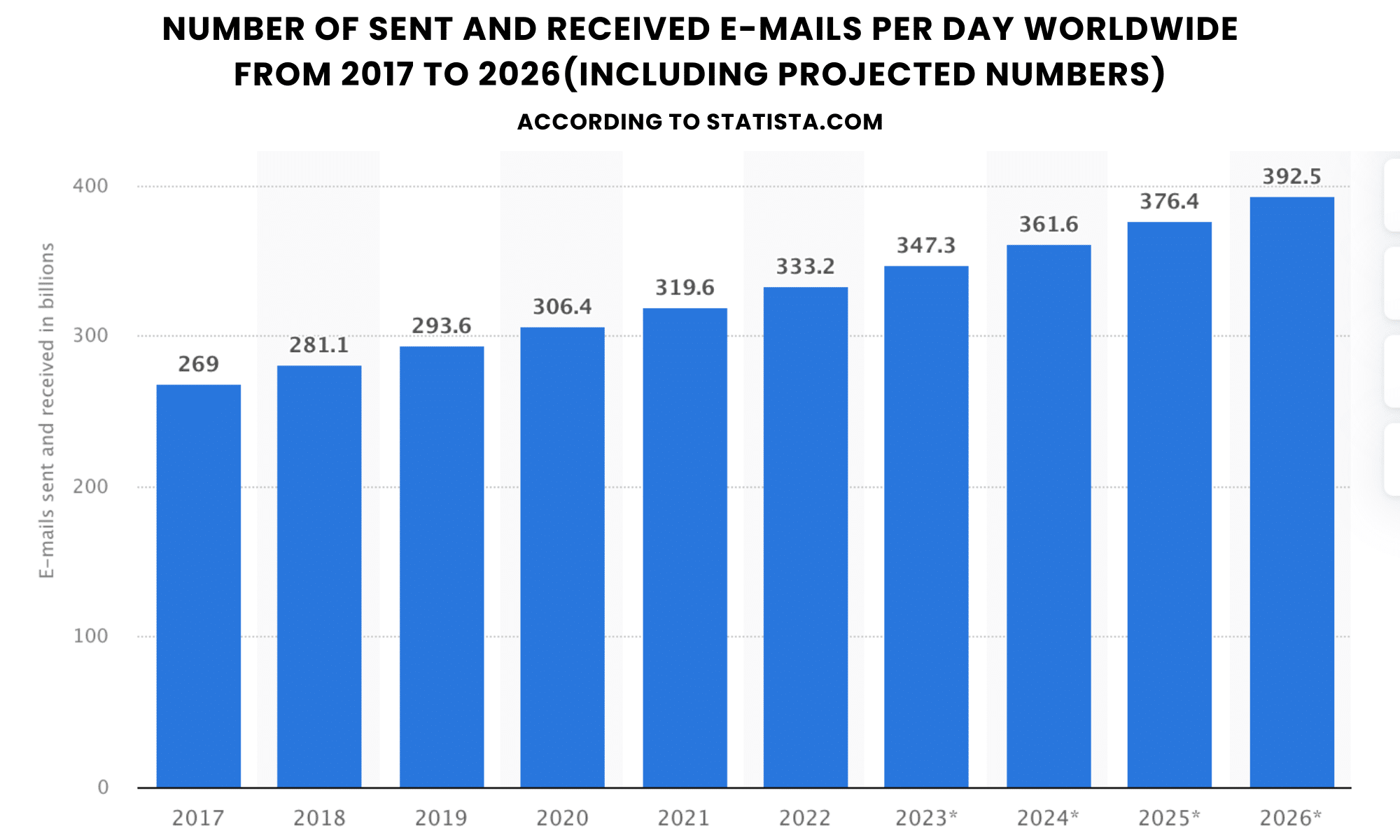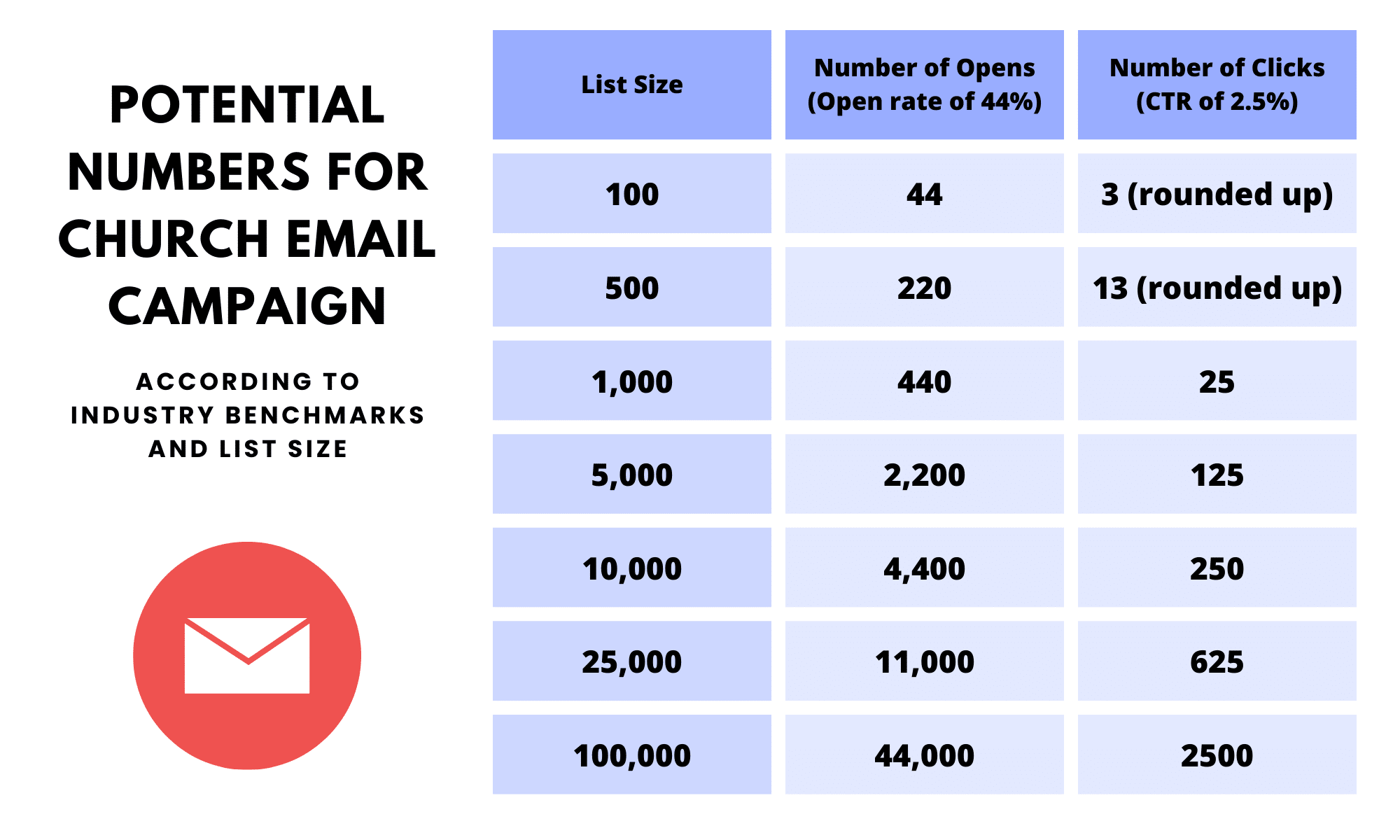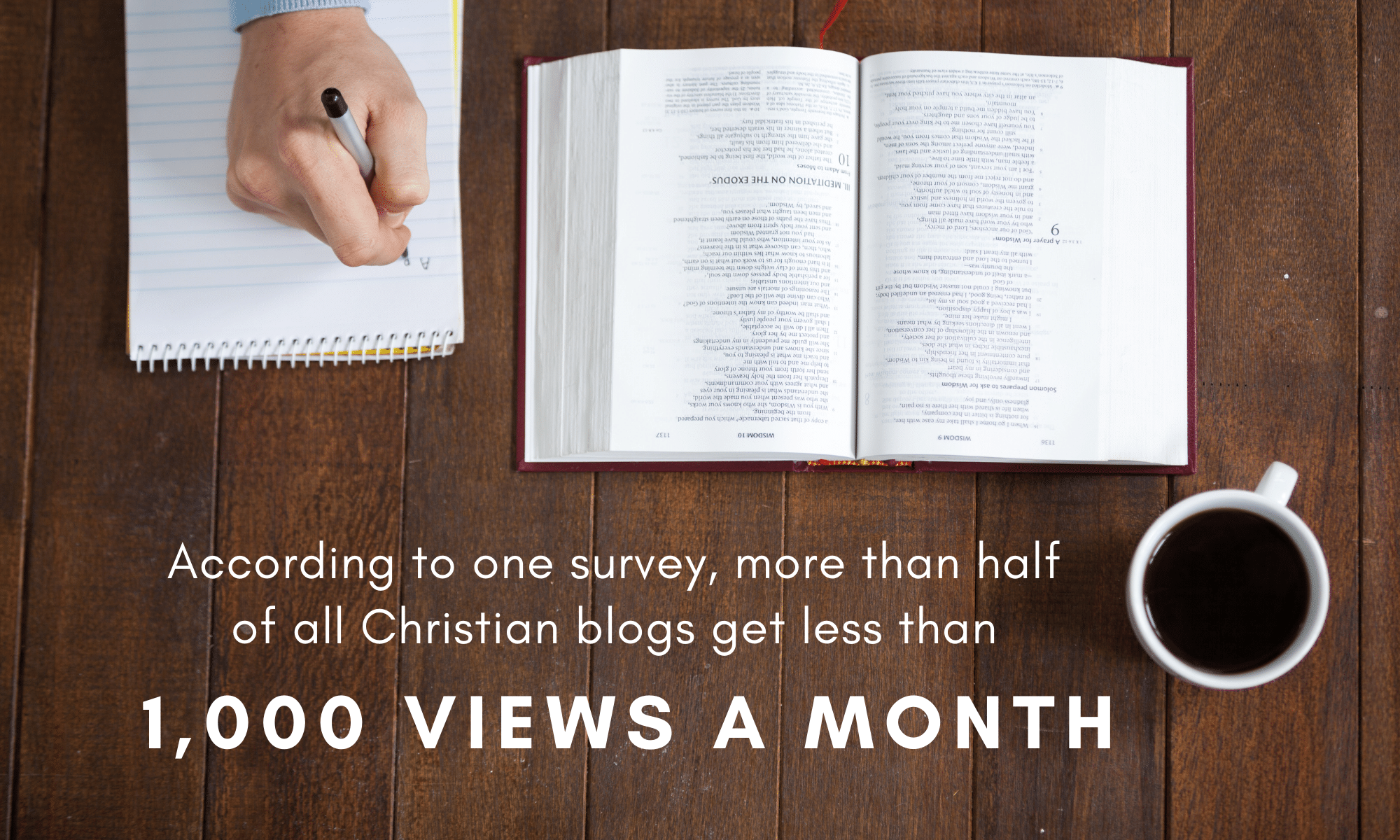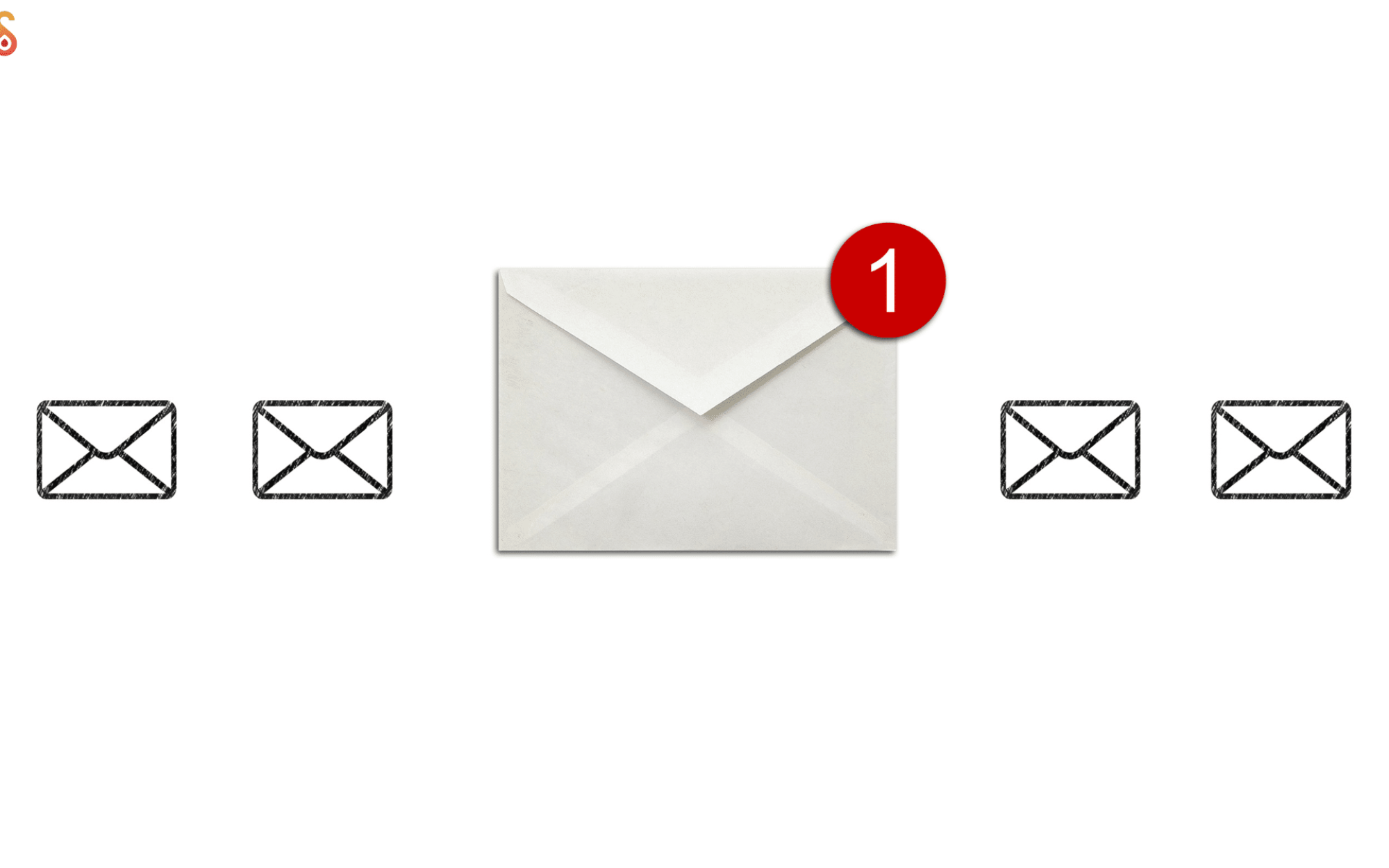Of all the tools in your church’s toolbox, email marketing is one of the most often neglected.
The reason is simple: it’s long, hard, and doesn’t produce immediate results. For those reasons, most churches would rather spend money on ads, beef up their social media profiles, or focus on SEO to drive results.
I don’t blame them. A lot of churches should be doing those types of things.
But not at the expense of building an email list.
As a matter of fact, I would argue that building your email list should be the primary focus of those other activities. If nothing else, it’s something tangible that you can point to and say, “See? This is how many people we’re reaching. This is how many people have raised their hand and signaled an interest in talking to us.”
And who knows? Maybe you can turn some of those emails into Bible studies, and prayerfully, into conversions.
What is Email Marketing?
Let’s start at the beginning. Email marketing is a form of marketing that relies on email as it’s primary channel. That’s it. Nothing crazy about that.
If you can believe it, email actually predates the internet. The first example of anyone using email anywhere is in 1965, when researchers at MIT created a computer program called “MAILBOX.” (Creative, I know).
The internet, by contrast, wasn’t invented until 1983.
This makes sense when you consider that the primary use-case of the internet was as a file-sharing and information transfer system, which is email’s sole focus.
This is important, because it signals that email marketing has staying power. At last check, there are over 7.9 billion email accounts (more than one for every single person on the planet). Collectively, they send 3.13 million emails every single second.

Email has withstood the onslaughts of affiliate marketing, direct marketing, paid ads, and most recently, SMS marketing (although that may eventually be just as powerful). If it’s survived those, it’s not going anywhere anytime soon.
Benefits of Email Marketing for Churches
As a whole, Diakonos is starting to pivot more directly towards building up email lists for churches. We still do all the other stuff — customized website design, SEO and mobile ready sites, paid ads, social media, et. Al. — but more often than not, we’re trying to convince clients to spend money on building an email list.
Here’s why.
More Direct Communication
Email is designed to be personal. Instead of a paid ad which is blasted to a certain demographic and a blog which is addressed to everyone, an email list is a personalized way of addressing individuals directly.
Even if they are simply a part of a 5,000 person list, there is still something personal about receiving an email directly from people.
As part of my ongoing Bible Blog Project, I’m generating my own email list for a Bible blog I’m developing on the side. Part of my automation sequence when I sign up is an offer to pray for anyone that simply replies back to my email sequence with a request.
It’s on autopilot; I’m never actually sending those emails out one by one. But I’ve already gotten several replies back from people that have a (sometimes very) personal request that they need prayers for. I say a quick prayer, replied that I’ve prayed (along with a few other words of encouragement), and hit send.
More often than not, I get a reply back thanking me for my prayers. My second prayer is that I can keep up the communication with that individual and I can help her become a Christian (if she isn’t already).
A church that actually cares about the local community is an oddity these days. According to a 2023 Barna poll, atheists listed a person that “listens without judgment” as the number one thing they want to see from a Christian they would be willing to talk with about faith.
Email provides that direct communication avenue that many might be looking for.
Slow-But-Consistent Engagement
Let me be frank: You don’t want to only tell people about the Bible one-time. You want to tell them about it multiple times.
In marketing lingo, this is called the “Rule of Seven.” In theory, you need at least seven different touch points before someone becomes aware of your brand.
In the Bible, Jesus described it more as a “hand off” routine.
In the story of the woman at the well in John 4, Jesus said, “One sows, and another reaps. I sent you to reap that for which you have not labored; others have labored, and you have come into their labor” (John 4:37-38).
In other words, you will most likely not tell someone about the Gospel and convert them to the Gospel in the same conversation. You might tell them about God, and then someone else will, and then someone else down the road may “reap” that soul.

In a way, an email list provides those multiple touch points that you’re after.
Someone may join your list because they saw an ad on Facebook. Then, they may read one of your articles that piques their interest. Then, they may watch one of your Youtube devotionals that addresses a concern they have. Finally, before you know it — and without your “direct involvement” — that person shows up at your assembly in order to hear about God in person.
All of this happened because that contact sat on your mailing list for months or even years, consuming your information, slowly but surely, until they reached the point of a decision.
More Inexpensive Reach
We run paid ads for several different churches, and the numbers are all over the map. One church spends around $50 per month, while another spends upwards of $3,000.
It’s up to each individual church’s budget to make those numbers work, but the fact remains that every single dollar needs to be used as efficiently as possible.
We’re very cognizant of the fact that we are stewards of church money, so the last thing we want to do is waste dollars on a campaign that doesn’t work, or (even worse) up-charge a congregation for things they don’t need just to line our pockets.
That’s why an email list is high on our priority list of all advertising campaigns. At the very least, every church can have a list that they can point to and say was created with those dollars.
And, better yet, we don’t have to spend more money to acquire those contacts.
A single-shot campaign of $250 for a Gospel Meeting may get hundreds of eyeballs, but how much of that transfers to in-person attendance. Unless you have a way of re-engaging those people, you’ll have to spend that (and more) to get the same amount of attention.
With an email list, you’ll spend $250 to acquire leads, which you can then announce your meeting to. Then, the next campaign will acquire even more leads, adding to the ones you already have.
Email list building produces a compounding effect that becomes more valuable the longer you stick with it.
Actionable Metrics
Digital marketing is all about numbers. Numbers, numbers, numbers.
Professional online marketers will use dozens or even hundreds of metrics to determine the success of a digital campaign. Email marketers will generally use three:
- Open Rate: How many people are actually opening your emails and reading them?
- Click-Through Rate: How many of those people are clicking on your links?
- List Growth Rate: How quickly is your list growing, and why?
There are a few others that are worth paying attention to as well, such as unsubscribe and bounce rate, but for our purposes here, those three will suffice.
It’s hard to overstate how important these numbers are. In years past, if you ran an ad in a magazine, for instance, you may know the distribution numbers, but you have no idea how many of those people actually opened up that magazine and saw your ad.
With these metrics, you not only know how many people read your ad, but what they did when they saw it.
Best of all, these numbers are largely static across industries. For religious organizations, the open rate for “faith-based organizations” is 44.11% and the click-through rate is 2.43%.
Those numbers may not sound appealing — especially if your list is only a few hundred people — but imagine if you had a few thousand on your list.

Those numbers can obviously flex as needed, but can you imagine having that kind of concrete attention for your Gospel Meeting, Lectureship, or singing?
Topical Authority
Obviously, Jesus is the Master Teacher. No one is debating that.
But as His disciple (and evangelist), you are responsible for helping to disseminate that all-important message into the world.
The problem is that people are hearing the name of Jesus from all corners of the world. Some of this information is true, but most of it is probably bad.
With an email list — and with the subsequent relationship-building that we talked about earlier — you have an opportunity to position yourself as a “Bible authority” on the matter. This is not because you have taken this honor to yourself, but because you continually point people to Scripture, rather than an event and/or laser light show.
Predictable Traffic Source
How many times have you written a blog article and had absolutely zero people read it? If you’re honest, probably more than you like.
As preachers, we write articles, sermons, and class material so that it can be consumed. And yet only 16% of people actually read a blog word-for-word (79% skim the article).

With an email list, you can be sure that at least someone will read your blog article (besides your mom). The numbers don’t lie.
Can Email Marketing Work For Churches?
Not only can email marketing be a valuable tool for churches, I believe it should be the primary tool you’re focusing on right now. Take some time to set some ads, create a landing page, and drive traffic to generate those leads.
If we can help you with that in any way, we would love to.
(As we stand and sing)


